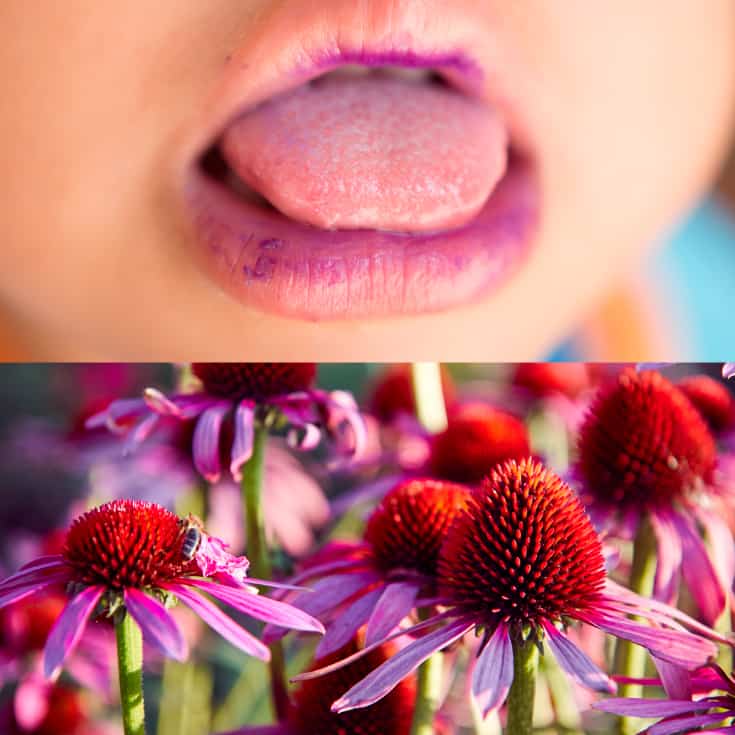This Dr. Axe content is medically reviewed or fact checked to ensure factually accurate information.
With strict editorial sourcing guidelines, we only link to academic research institutions, reputable media sites and, when research is available, medically peer-reviewed studies. Note that the numbers in parentheses (1, 2, etc.) are clickable links to these studies.
The information in our articles is NOT intended to replace a one-on-one relationship with a qualified health care professional and is not intended as medical advice.
This article is based on scientific evidence, written by experts and fact checked by our trained editorial staff. Note that the numbers in parentheses (1, 2, etc.) are clickable links to medically peer-reviewed studies.
Our team includes licensed nutritionists and dietitians, certified health education specialists, as well as certified strength and conditioning specialists, personal trainers and corrective exercise specialists. Our team aims to be not only thorough with its research, but also objective and unbiased.
The information in our articles is NOT intended to replace a one-on-one relationship with a qualified health care professional and is not intended as medical advice.
Uveitis Causes + 7 Tips to Improve Eye Health
November 13, 2017

Uveitis is a group of eye conditions that cause inflammation in the eye (usually in the uvea, which is in between the outer and inner layers of the eye). (1) It can happen on its own or as part of another disease affecting the body. About 38,000 cases happen each year in the U.S. (2)
Thankfully, uveitis is treatable. However, if left untreated the condition can cause permanent scarring of the eye, vision loss or total blindness. (3) In fact, it is the third leading cause of blindness in the U.S. and can affect people of any age. (4) Learn some strategies you can take to reduce your risk of this condition and the treatment options available to you in case of a diagnosis.
What Is Uveitis?
A simple uveitis definition is inflammation of the middle layer of the eye. To get more detailed, it is inflammation in at least one of the three parts of that middle layer, called the uvea: the iris, the ciliary body, and the choroid. (5) The iris is the colored circle in the front of your eye. The ciliary body controls the eye’s lens, helping you focus on things you see. The choroid brings nutrients to the retina (which tells your brain what you see). When one of these three parts of the eye gets inflamed, it causes uveitis.
Uveitis is sometimes referred to as iridocyclitis. However, iridocyclitis is only an infection of the iris and ciliary body and does not include the other types of uveitis listed below — iridocyclitis is most accurately used to describe only one type of uveitis (anterior). (6)
Uveitis can occur at any age, although it is most common between the ages of 20 and 60 and may happen in one or both eyes. (7) Women are slightly more likely to get it than men. (8)
Types of Uveitis
There are several ways this condition can be classified: (9)
- Anterior uveitis: This just means that the inflammation is in the front part of the eye. It’s the most common type and affects mostly young or middle-aged people. To distinguish anterior uveitis from iritis, anterior uveitis can be inflammation of the iris (iritis) and/or the ciliary body, whereas iritis just affects the iris.
- Intermediate uveitis: In this type, inflammation can be found in the vitreous (the fluid-filled center of the eyeball). It often affects young adults who have other specific health problems, such as multiple sclerosis or sarcoidosis.
- Posterior uveitis: This is the rarest type and affects the back part of the eye (the choroid and sometimes the retina).
- Panuveitis: This is when all three parts of the eye are affected (front, middle, and back).
Is uveitis serious?
Uveitis may heal quickly (in a matter of weeks), or it may take many months to improve, even with aggressive treatment. Anterior uveitis is usually easiest to treat, but every type can be serious or can come back again and again. (10) When treatment is done quickly and effectively, vision and other symptoms usually improve. Left untreated, all types of this condition can cause inflammation that can lead to scarring and blindness. (11)
Signs & Symptoms
Uveitis symptoms include: (12)
- Blurry vision
- Dark floaters or spots in the vision
- Red eye
- Eye pain
- Sensitivity to light

However, not all types of this condition have the same symptoms. For example:
- Anterior uveitis causes sensitivity to light and a small pupil, plus blurred vision, eye pain and redness. (13)
- Intermediate uveitis usually doesn’t cause pain but often comes with floaters and blurry vision. (14)
- Posterior uveitis may cause vision loss but no other symptoms; the cause of the vision loss may not be known until an eye doctor checks the eye. (15)
If you have any changes in vision, eye pain or major sensitivity to light, get your eyes checked by an eye doctor (ophthalmologist) as soon as possible.
Uveitis vs. Conjunctivitis
The symptoms of uveitis may be easily confused with those of conjunctivitis (commonly known as pink eye). However, uveitis can cause permanent vision loss if left untreated, and it does not spread from person to person. Pink eye is contagious but usually resolves on its own without complications or vision disturbances.
Causes & Risk Factors
In response to germs, toxins or injury, the eye may swell, become red, feel warm and have some tissue death. (16) These responses cause the eye inflammation that is known as uveitis. The condition can be broken into types by its causes: infectious or noninfectious.
Infectious Causes of Uveitis
Infectious cases have several possible causes, including: (17)
- Bacterial infection
- Viral infection
- Parasites
Specific infections known to be associated with this eye problem include: (18, 19)
- Lyme disease
- toxoplasmosis
- herpes simplex (HSV-1; the virus that causes cold sores)
- tuberculosis
- cytomegalovirus
- cat scratch disease
- varicella-zoster (the virus that causes chicken pox and herpes zoster, otherwise known as shingles)
In rare cases it has also been associated with syphilis and HIV infection. (20)
Noninfectious Causes of Uveitis
Noninfectious uveitis is more common than infectious cases (21), and causes include: (22, 23, 24, 25, 26)
- A bruise to the eye, or another eye injury
- Eye surgery
- An autoimmune condition such as:
- sarcoidosis
- ankylosing spondylitis
- Crohn’s disease
- ulcerative colitis
- multiple sclerosis
- psoriasis and psoriatic arthritis
- rheumatoid arthritis and other types of arthritis
- lupus
- Behcet’s disease
- Cancer or a tumor in the eye
Despite all of these known causes of this condition, as many as 50 percent of cases have no known cause. (27) Furthermore, the most likely causes vary by the type you have: (28)
- The most common anterior uveitis causes are arthritic diseases and sarcoidosis, although the cause is unknown in nearly 40 percent of cases.
- Intermediate uveitis causes are often unknown (70 percent), but sarcoidosis and multiple sclerosis are fairly common causes.
- Posterior uveitis is often caused by infections such as toxoplasmosis or cytomegalovirus, but has many noninfectious causes as well.
- Panuveitis has an unknown cause in about one in five cases, and leading known causes include other eye problems, sarcoidosis, lupus, and more.
Risk Factors for Uveitis
You are most at risk if you have any of the following: (29)
- an autoimmune or inflammatory disease
- an existing infection
- another eye disease
- a cat
- a prescription for certain drugs, such as the antibiotic rifabutin (Mycobutin)
- a gene called HLA-B27 (a known genetic risk factor for certain autoimmune conditions as well as uveitis) (30)
If you have any of these risk factors and you notice any changes in your vision or have eye pain or redness, visit an eye doctor right away.

Conventional Treatment
Conventional uveitis treatment involves treating the symptoms, disease process, and underlying cause of the inflammation.
What is the best treatment for uveitis?
Depending on what has caused your case, your treatment plan may include: (31)
- corticosteroid pills, injections or eye drops
- antibiotics or antiviral medication
- nonsteroidal anti-inflammatory drugs (NSAIDs)
- drugs to suppress the immune system (if corticosteroids don’t work)
These treatments help reduce swelling and inflammation in the eye. In the case of infections, your treatment will also fight the bacterial or viral cause. If a condition such as sarcoidosis or rheumatoid arthritis is the cause of your diagnosis, your treatment plan will also include ways to manage the underlying disease. (32)
Acute iridocyclitis treatment or anterior uveitis treatment have similar considerations. Most cases are treated with corticosteroids. In cases where acute disease turns into chronic or recurrent uveitis, doctors often use more aggressive treatment. And when the condition causes serious damage to the eye, such as cataracts, glaucoma or a detached retina, surgery may be necessary to repair the tissue and restore vision. (33)
7 Natural Ways to Relieve Uveitis
Uveitis requires rapid conventional medical treatment to get better and to avoid vision loss. Natural treatments for uveitis can offer symptom relief, though. You can also use natural therapies to help treat the underlying conditions that have led to your uveitis (such as Crohn’s disease or arthritis) or to support general eye health and reduce inflammation.
Natural options for managing the symptoms include: (34)
- Warm or cool compresses to relieve pain or swelling
- Sunglasses to protect your eyes if they are sensitive to light
- A daily multivitamin
- Vitamin C (500 micrograms twice a day) and vitamin E (100 micrograms twice a day) may reduce symptoms of anterior uveitis when taken together with conventional treatment.
- Turmeric (Curcuma longa) supplements
- The antioxidants in turmeric (for example, a standardized extract of turmeric 300 micrograms three times per day) may help the immune system fight chronic uveitis, although more research is needed. (35)
- Omega-3 fatty acid supplements or eating cold-water fish
- These can reduce inflammation and boost your immune system.
- Lutein supplements to support general eye health
- A diet that supports eye health
- Focus on antioxidant-rich foods such as blueberries, leafy greens, tomatoes, peppers and cherries.
Although there is no sure-fire way to prevent this condition, you can reduce your chances of getting it. The easiest ways to reduce your risk include: (36)
- Control any autoimmune or inflammatory conditions you may have.
- Reduce your exposure to the key infectious causes of the condition, such as tuberculosis, Lyme disease, toxoplasmosis, varicella-zoster, syphilis etc.
- Avoid eye trauma by wearing protective eye gear during sports, while working with power tools and any other time your eyes may be exposed to potential injury.
- Make lifestyle changes: eat for good eye health, avoid smoking (implicated in the inflammatory response of the body and its ability to heal) and reduce stress.
Precautions
Uveitis requires conventional treatment to resolve and to protect your vision. Do not attempt to treat it with natural therapies alone. Natural treatments and a change in diet can support your immune health and reduce inflammation but won’t cure the condition. The longer you wait before seeking treatment, the greater the risk to your vision. (37)
Always talk with a health care professional before adding supplements — including vitamins, herbs and spices — to your diet or self-care plan. In some cases, as with vitamins C and E, omega-3 fatty acids and turmeric, natural therapies can interact with certain drugs you may be prescribed (such as blood thinners) and can increase your chances of bleeding or having other problems.
Remember: children can also get uveitis. Be vigilant for symptoms in your children and work to promote their eye health. You can also help protect their eyes from injury by padding sharp corners when they are young and by requiring them to wear eye protection as needed for sports or other activities.
Key Points
- Uveitis is inflammation of the middle layer of the eye.
- In some cases, a diagnosis is the tip-off to a serious health problem, so do not ignore symptoms.
- Swift treatment is very important to protecting your eye health and preventing long-term vision loss.
- If you have any signs of the condition, or any other signs of a problem with your vision or eye health, talk to a health care professional right away.
- Get a regular (annual, at least!) eye exam to monitor your eye health.
7 Natural Ways to Manage Symptoms
- Use warm or cool compresses to relieve swelling.
- Wear sunglasses.
- Take a daily vitamin.
- Take a turmeric supplement.
- Eat cold-water fish and/or take an omega-3 supplement.
- Take a lutein supplement to support general eye health.
- Eat a healthy diet.










